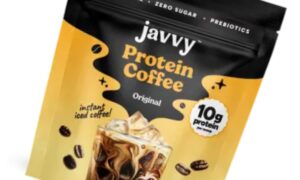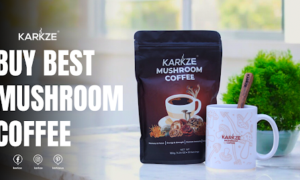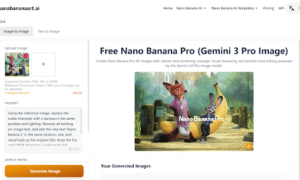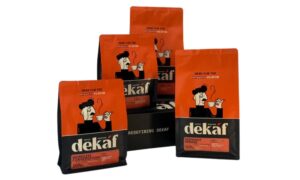A cup of coffee often marks the beginning of a day — but it also reveals something more subtle: routes, habits, and everyday decisions. A coffee shop is more than a place to buy a drink; it’s a precise indicator of urban dynamics, local demand, and cultural identity.
When I began developing the Coffee Navigator project, my goal wasn’t to map the best places to get a good espresso. It was to build an analytical system capable of observing the city through the lens of coffee culture — consistently, objectively, and free from distortion.
Today, Coffee Navigator is an independent research platform that gathers, processes, and interprets data on coffee consumption in urban settings. We don’t publish ratings, we don’t do sponsored content, and we don’t work with venues on promotional terms. We see the industry not as consumers, but as observers — curious about patterns and connections.
From points on a map to urban structure
Coffee shops are among the first businesses to appear in emerging neighborhoods — and often the last to disappear from declining ones. They respond faster than most to changes in pedestrian traffic, pricing, preferences, and aesthetics. That’s why they’re ideal markers of how urban life is evolving.
Instead of reviewing or ranking venues, we started documenting their conditions for resilience: how long they remain open, how often they shift format, how offerings change with the seasons. These observations shaped the architecture of a platform where every element — be it a bean origin, a brew method, or a location — becomes part of a broader behavioral model. Today, this model is used not only for mapping but also as a tool to support strategic decisions in menu design, brand communication, and site selection.
Taste as a language of behavior
At the core of our methodology is the idea that taste is more than sensory preference — it’s a behavioral signal. People don’t simply choose a drink; they make a decision that combines variety, method, atmosphere, brand, and moment. These decisions reflect time of day, urban context, cultural exposure, and individual experience.

Sergey Baburov explores cultural and behavioral frameworks — the foundation behind the Navigator philosophy
That’s why we analyze not only what people choose, but also where, when, and how. This enables us to detect early signals — a spike in filter coffee sales after a brand campaign, or shifting patterns of customer behavior following the arrival of a new venue in a business district. These insights help participants across the industry — from equipment manufacturers to coffee chains — make grounded, data-informed decisions.
From abstract data to lived context
Our research integrates clustering algorithms, geospatial analysis, and field observation. We process data on consumer preferences, brewing methods, branding styles, location dynamics, and operational longevity.
Special attention is given to how venues engage their communities — from social media tone to physical design and loyalty mechanisms. The goal isn’t to produce static reports, but to generate contextual knowledge that explains why certain formats thrive while others vanish, or why one technology becomes foundational while another remains a short-lived trend.
This type of insight has proven particularly valuable for strategic marketing, product development, and retail planning.
Applied use in business
The insights generated by Coffee Navigator are used by a wide range of actors: coffee roasters, equipment manufacturers, retail strategists, brand developers, and commercial architects.
Each operates in a different part of the value chain, but all require clearer orientation in fast-moving markets. A roaster may need to know whether pour-over is gaining traction in a particular segment. A real estate team may use our analysis to understand where independent coffee shops contribute to commercial activation.
Our platform supports decision-making in assortment planning, visual strategy development, traffic forecasting, and adapting product and service models to real behavioral patterns.
Scalable and globally relevant

A quiet moment between strategic conversations — Sergey Baburov, founder of Navigator, reflects on long-term shifts in consumer behavior.
Coffee is a global language — but one that speaks in distinct dialects from city to city. That’s why our methodology is designed to be adaptable across geographies. We focus on large urban markets with dynamic consumer behavior and a high density of independent venues. These environments offer rich observational data — both in terms of preference and spatial behavior.
The project has attracted interest from researchers, investors, and brands operating across different cultural and commercial contexts. Because regardless of location, coffee remains a reliable way to understand how people navigate complex urban systems.
Why this approach works

Sergey Baburov discussing data architecture for Navigator — where observation meets decision-making
Three principles make the analytical approach behind Coffee Navigator both sustainable and valuable. First, its independence: the refusal to engage in promotional partnerships ensures trust and objectivity. Second, the focus is not on reach but on depth — prioritizing observation over visibility. And third, its applied nature: the analytics are built not for abstract insight but for real-world strategic and operational decision-making.
Conclusion
At the heart of Coffee Navigator lies the belief that cities can be read through everyday rituals — and coffee is one of the most expressive of them. It weaves together taste, movement, communication, design, and economic logic.
By analyzing these elements together, we generate not just industry knowledge, but a map of opportunity — revealing where businesses can grow by aligning with actual demand, not assumptions.
Rather than guessing, we observe. Rather than generalize, we specify. That’s the kind of thinking that helps businesses make meaningful, confident decisions in fast-changing environments.



































